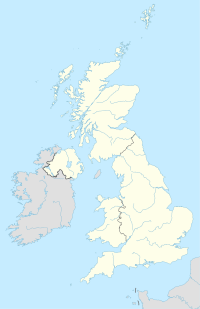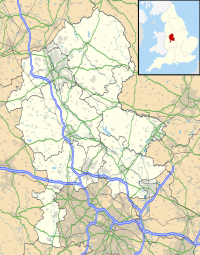|
Centre points of the United Kingdom
  There has long been debate over the exact location of the geographical centre of the United Kingdom, and its constituent countries, due to the complexity and method of the calculation, such as whether to include offshore islands, and the fact that erosion will cause the position to change over time. There are two main methods of calculating this "centre": either as the centroid of the two-dimensional shape made by the country (projected to the Airy ellipsoid then flattened using the Transverse Mercator projection), or as the point farthest from the boundary of the country (either the sea, or, in the case of constituent countries, a land border). These two methods give quite different answers. Traditional locationsThe town of Haltwhistle in Northumberland has banners stating that it is the "Centre of Britain".[1] By another calculation the centre can also be said to be Dunsop Bridge, Lancashire, 71 miles (114 km) to the south.[2] However, in 2002 the Ordnance Survey conducted studies that pinpointed the respective centres more precisely, and it is their results that are quoted below.[3] Centroid locationsMap of centres
The centroid is a mathematically derived point that is in every sense the centre of a two dimensional area like a piece of land. If a straight line is drawn through a centroid in any direction there will be equal length of the line on either side of the centroid as measured from it to the boundary if the line is unbroken on either side. If a line crosses an inlet of the sea then it can be considered as a stick of uniform weight with a material of negligible weight crossing the water, the line would then balance precisely at the centroid point if suspended. Map of centres of the UK and Great Britain Map of centres of UK and England by various methods Put simply, the centroid is the point at which a cardboard cut-out of the area could be perfectly balanced on the tip of a pencil.[4] Islands are assumed fixed to the mainland in their precise position by invisible rigid weightless wires. A mathematical method is used to do the balancing to a much greater accuracy than the practical method could achieve. Unless stated, positions are the centroids of the two-dimensional shapes made by the countries. Calculations include offshore islands unless stated. United Kingdom
Great Britain
Great Britain (mainland only)
England
Northern Ireland
Scotland
Wales
Locations found by other methodsPoint farthest from the sea
Point farthest from high tide mark (including tidal rivers)
Mid point of the longest north–south axis
Centre of population
Centre of England   For centuries the parish of Meriden to the west of Coventry has claimed to be the geographical centre of England, and there has been a stone cross there commemorating the claim for at least 500 years. The justification is that the point farthest from the sea is in the parish.[citation needed] Morton, Derbyshire also claims to be the centre of England as it is not only midway along England's longest north-south axis,[citation needed] but also midway between the east coast and the Welsh border.[citation needed] Claims are also made for a tree, the Midland Oak, in Leamington Spa, Warwickshire, although the basis for these claims is not clear. See alsoReferences
Further reading
|


